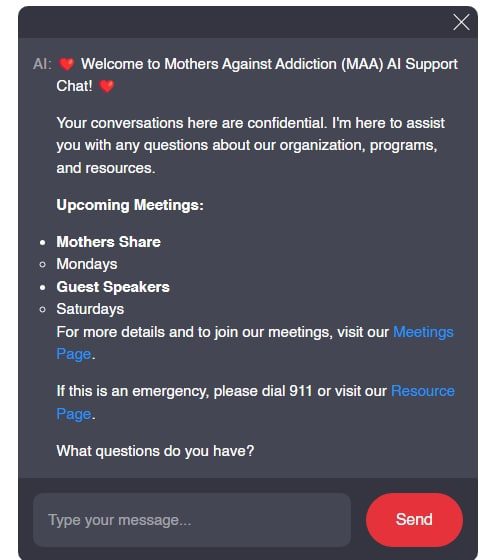Understanding Sober Living Homes: Definition and Purpose
Sober living homes, also known as halfway houses or transitional housing, serve as supportive living environments for individuals recovering from addiction. These homes act as bridges between an inpatient rehabilitation program or detoxification center and independent sober living. They provide a structured, substance-free space that nurtures long-term sobriety and recovery.
Unlike rehabilitation centers, sober living homes don’t offer formal addiction treatment. Instead, they’re designed to create a supportive environment where residents can gradually reintegrate into society while maintaining their sobriety. These homes are vital for sustained recovery, as they offer the consistency and support necessary for individuals to apply what they’ve learned in rehabilitation to real-world situations.
By offering alcohol- and drug-free living environments, sober living homes help individuals maintain abstinence from substances. Structured around 12-step programs or other recovery methodologies, these homes hold tremendous significance in the realm of addiction recovery.
The Role of Rules and Structure in Sober Living Homes
One key feature of sober living homes is the structured environment they provide. Residents must follow a set of rules designed to maintain a safe and supportive atmosphere. Curfews, mandatory house meetings, drug testing, and chores are common requirements in these homes. These regulations help foster a sense of responsibility and community among residents.
Additionally, many sober living homes require residents to participate in local 12-step meetings or other recovery programs. This structure enables individuals to develop routines and build accountability, which are critical factors in preventing relapse. The routines and responsibilities in sober living homes help residents learn to manage their time and decisions without the influence of substances.
For example, Serenity House in Monterey integrates holistic practices like yoga and meditation, combined with one-on-one counseling, to create a balanced routine for its residents. Such comprehensive approaches make sober living environments ideal for those committed to their recovery journey.
| Category | Information |
|---|---|
| Definition | Sober living homes, also known as halfway houses or transitional housing, provide supportive living arrangements for individuals recovering from addiction. They offer a bridge between inpatient rehabilitation programs or detoxification centers and independent sober living. |
| Purpose | To help individuals maintain abstinence from alcohol and drugs and provide a structured environment to support recovery. |
| Structure | Typically structured around 12-step programs or other recovery methodologies. Residents often have responsibilities, such as chores, curfews, and attendance at group meetings. |
| Benefits | – Easier transition back to mainstream life |
| – Continuous support in maintaining sobriety | |
| – Development of life skills and coping mechanisms | |
| – Creation of a sober support network | |
| Rules & Regulations | – Alcohol- and drug-free environment |
| – Adherence to house rules (e.g., curfews, mandatory meetings) | |
| – Random drug and alcohol testing | |
| – Responsibilities like chores and house upkeep | |
| Cost | Varies widely, typically ranging from $500 to $2,000 per month, depending on location, amenities, and level of support. Some insurance plans may cover part of the cost. |
| Typical Residency Duration | Often 3 to 6 months but can extend to a year or longer based on individual needs and progress in recovery. |
| Support Provided | – Peer support and camaraderie |
| – Access to addiction counseling | |
| – Employment and education assistance | |
| – Life skills training | |
| Key Considerations | – Finding a reputable house |
| – Ensuring financial ability to cover costs | |
| – Compatibility with house rules and structure |
The Benefits of Sober Living Homes: Empirical Evidence and Personal Stories
Empirical evidence and personal testimonies emphasize the numerous benefits of sober living homes. Research published in the Journal of Psychoactive Drugs indicates that individuals who lived in sober living homes post-treatment reported significantly fewer relapses and higher rates of employment and stable housing. This substantial difference underscores the effectiveness of these homes in promoting long-term recovery.
Personal stories often bring the numbers to life. Take John Taylor, for instance, a recovering addict who credits his success to his time at New Life Sober Living. John’s story resonates with many, illuminating the transformative power of these homes. He found a supportive community that held him accountable and helped him rebuild his life, ultimately leading him to a stable job and a fulfilling life.
Furthermore, sober living homes offer a safe haven for recovery, free from the triggers and temptations of the outside world. This secure environment is instrumental in helping residents focus on their healing process, building resilience and self-confidence.
Community and Accountability: The Bedrock of Sober Living Homes
The sense of community and accountability fostered in sober living homes is paramount. Residents live with peers who share similar struggles and goals, creating a support system that is often lacking in other environments. Programs like The Phoenix House prioritize communal living and shared activities, helping build camaraderie among residents.
Living with others who understand your journey provides both emotional support and practicality. Peers encourage one another to stay committed to their recovery, reinforcing positive behaviors and providing a network of accountability. This mutual support can be a powerful motivator—knowing that others depend on you fosters responsibility and reduces the risk of relapse.
Oxford House, for instance, operates on a democratically-run model where residents govern and maintain their living space. This system encourages independence and responsibility, making it a standout example of how structured community living can bolster recovery efforts.
A Closer Look at Notable Sober Living Homes
Several notable sober living homes across the country offer unique approaches to supporting recovery:
These homes provide unique insights into various methodologies utilized in sober living environments. Whether it’s the community-driven model of Oxford House or the holistic approach of Serenity House, each has proven effective in supporting residents on their recovery journey.
Barriers to Access: Challenges and Solutions
Despite their benefits, sober living homes come with challenges. Barriers to access include high costs, limited availability, and stigmatization. Financial barriers can be particularly daunting for individuals who are just beginning their recovery journey. However, initiatives like the Oxford House Rent Scholarship Program and grants from the Substance Abuse and Mental Health Services Administration (SAMHSA) are making these homes more accessible.
The high cost of sober living can be mitigated through financial assistance programs and community grants. Making these resources widely known and accessible can significantly reduce barriers to entry, allowing more individuals to benefit from sober living environments.
Stigmatization also poses a hurdle. Society often unfairly labels individuals in recovery, creating additional emotional and social obstacles. Addressing this stigma requires widespread education and advocacy, helping the public understand the importance of sober living homes in the recovery process.
How Families Can Support Their Loved Ones
Families play a crucial role in the recovery process. For parents of children struggling with addiction or those who have lost a child to addiction, understanding how to support their loved ones in sober living homes is paramount. Simple yet impactful actions can make a world of difference.
Actively engaging in a loved one’s recovery journey reinforces the principles of sober living and provides emotional support. For more tips and insights, visit our page on Supporting a Loved One in Recovery.
Future Directions: The Evolving Landscape of Sober Living Homes
The field of addiction recovery is continuously evolving, with sober living homes at the forefront of innovative approaches. Emerging trends include the integration of technology to provide additional support. Programs like Lighthouse Sober Living are pioneering advancements such as remote monitoring systems and teletherapy, setting new standards for care.
These technological innovations can help monitor residents’ progress and provide instant access to counseling and support. As technology continues to advance, we can expect even more sophisticated methods to support recovery in sober living homes.
Moreover, the increasing recognition of mental health’s importance in addiction recovery leads to more comprehensive care approaches. This holistic view helps address all facets of a person’s well-being, contributing to more effective and lasting recovery.
Final Thoughts: The Impact of Sober Living Homes on Long-Term Recovery
Sober living homes serve as more than just transitional housing; they are lifelines that bridge the gap between treatment and independent living. These homes significantly increase the chances of sustained recovery by offering a structured, supportive environment. As the landscape of addiction recovery continues to evolve, continued investment and innovation in sober living homes will be vital in combating addiction and providing hope to countless individuals and their families.
In summary, sober living homes provide invaluable support to individuals on their journey to recovery. Through structure, community, and accountability, they offer a pathway to a sober and fulfilling life. Families, policymakers, and communities alike must recognize and support these critical institutions to ensure their success and accessibility.
For more information on addiction recovery programs and support, visit our page on Addiction Recovery programs.
Sober Living Homes: Supportive Recovery Bridges
Trivia and Interesting Facts
Sober living homes offer an incredible avenue for those on the path to recovery. They serve as essential support structures, blending the comforts of home with a supportive community aimed at fostering long-term sobriety. But did you know there are some fascinating tidbits about these homes that might surprise you?
Firstly, these sober living homes are virtually everywhere. With over 19,500 cities in the U.S., you’d be hard-pressed to find one without a sober living home. This widespread availability offers those in recovery a range of supportive environments, regardless of their location. It’s interesting how a community so large can still feel so personal and tailored to individual journeys.
Moreover, locations for these homes aren’t just arbitrary. Often, they’re situated in serene residential areas, far from the hubbub but still accessible to essential amenities. Imagine finding similar peaceful vibes to those experienced on Cruises out Of Baltimore—calm and rejuvenating.
Here’s another nugget of wisdom: many residents of sober living homes embrace the system not just for sobriety but for the community it fosters. The homes offer a kind of family-like environment, different but supportive, especially for those who may have experienced loss. Institutions like Jenkins Funeral home can be a testament to the importance of community and support during tough times.
Financially speaking, sober living homes offer a significant benefit. Residents often find them more affordable compared to rental units or rehab centers. While the cost may fluctuate much like today’s mortgage rates, it remains relatively low, removing one potential stressor from the recovery equation.
The incredible thing about these homes is their flexibility. They cater to varied durations of stay, unlike other rehab programs that may have strict timelines. Just like tax considerations for short-term gains rely on specific conditions, sober living homes adapt based on individual needs, which can make a real difference in long-term recovery success.
By embedding these homes into our society as they are, people in recovery get an invaluable toolset: community, affordability, and a structured yet adaptable environment. And that’s something we can all get behind.

What is an advantage of a sober living home?
One advantage of a sober living home is that it eases the transition back into everyday life, providing a structured environment that supports ongoing recovery efforts, making it easier to maintain sobriety after leaving rehab.
What is another name for sober living homes?
Another name for sober living homes is halfway house or transitional housing, and they provide a supportive and structured environment for individuals recovering from addiction.
What is the meaning of sober living?
Sober living means staying in a supportive alcohol- and drug-free environment that helps individuals maintain their abstinence from alcohol and drugs while transitioning from rehab back to regular life.
How much does sober living cost in Texas?
The cost of sober living in Texas can vary widely, depending on the location and the specific amenities offered, but on average, it might range from a few hundred to a couple of thousand dollars per month.
How long do most people stay in sober living?
Most people stay in sober living homes for a few months to a year, depending on their individual recovery progress and needs for ongoing support.
Is sober living a good investment?
Sober living can be a good investment if it aligns with personal and community goals of helping others maintain sobriety and providing a structured, supportive environment for recovery.
What is the politically correct term for a halfway house?
The politically correct term for a halfway house is either a sober living home or transitional housing, terms which emphasize the support and sobriety aspects of the facility.
What is a sober house?
A sober house is a supportive, alcohol- and drug-free living environment where individuals recovering from addiction can continue their sobriety journey and transition back to independent living.
What is another name for a pleasure house?
Another name for a pleasure house is a brothel, which is an establishment where people engage in sexual activities, usually for money.
What does the Bible say about living a sober life?
The Bible encourages living a sober life, emphasizing self-control, moderation, and avoiding excess, drawing on principles like those found in Ephesians 5:18, which advises against getting drunk on wine, which leads to debauchery.
Can you leave sober living?
You can leave sober living, but it’s generally recommended to stay until you feel ready and stable enough to maintain your sobriety independently, as leaving prematurely may increase the risk of relapse.
Is it better to live a sober life?
Living a sober life is generally considered better for overall health and well-being, as it leads to clearer thinking, better relationships, and more stable finances, among other benefits.
Do sober living homes need to be licensed in Texas?
In Texas, sober living homes may not need a specific state license, but they must comply with local zoning laws and safety regulations, and some may choose to seek certification to enhance their credibility.
How much money do you save by being sober?
Being sober can save a significant amount of money by cutting out expenses related to alcohol or drug use, as well as associated costs like healthcare, legal fees, and loss of productivity.
How much does a sober companion cost?
A sober companion can cost anywhere from a few hundred to several thousand dollars per day, depending on the level of service and expertise required, as well as the duration of the engagement.
Is it better to live a sober life?
Being sober often leads to numerous benefits such as improved physical health, better mental clarity, enhanced relationships, and increased financial stability, making it a fulfilling and healthier life choice.
What are the benefits of being sober?
A sober house is a supportive living arrangement for those recovering from addiction, providing a structured and alcohol- and drug-free environment that helps maintain sobriety and eases the transition back to regular life.
What is a sober house?
A halfway house is important because it offers a safe, supportive environment that helps individuals in recovery build the skills and habits needed for independent sober living, thereby reducing the risk of relapse.




























